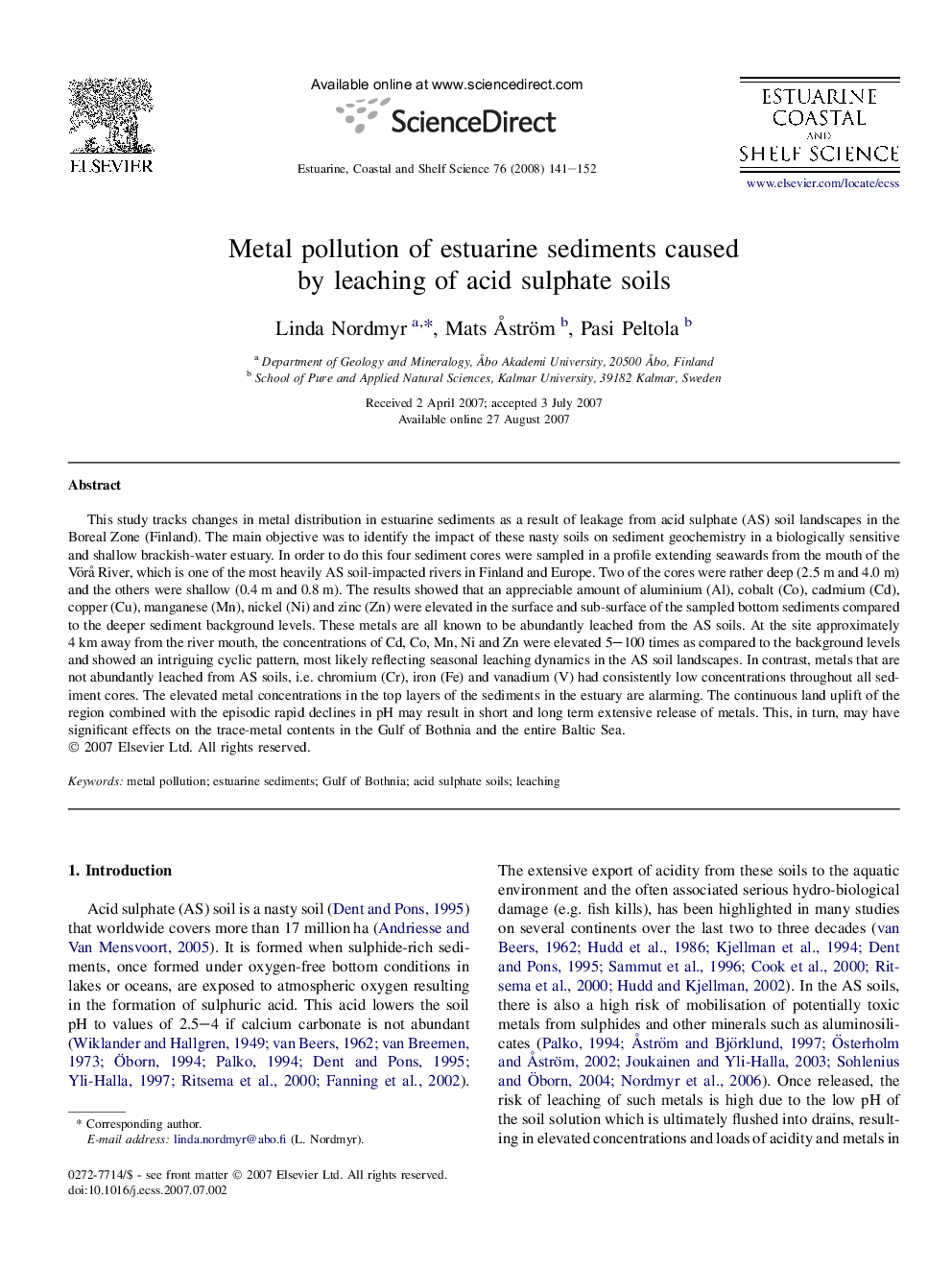| Article ID | Journal | Published Year | Pages | File Type |
|---|---|---|---|---|
| 4542273 | Estuarine, Coastal and Shelf Science | 2008 | 12 Pages |
This study tracks changes in metal distribution in estuarine sediments as a result of leakage from acid sulphate (AS) soil landscapes in the Boreal Zone (Finland). The main objective was to identify the impact of these nasty soils on sediment geochemistry in a biologically sensitive and shallow brackish-water estuary. In order to do this four sediment cores were sampled in a profile extending seawards from the mouth of the Vörå River, which is one of the most heavily AS soil-impacted rivers in Finland and Europe. Two of the cores were rather deep (2.5 m and 4.0 m) and the others were shallow (0.4 m and 0.8 m). The results showed that an appreciable amount of aluminium (Al), cobalt (Co), cadmium (Cd), copper (Cu), manganese (Mn), nickel (Ni) and zinc (Zn) were elevated in the surface and sub-surface of the sampled bottom sediments compared to the deeper sediment background levels. These metals are all known to be abundantly leached from the AS soils. At the site approximately 4 km away from the river mouth, the concentrations of Cd, Co, Mn, Ni and Zn were elevated 5–100 times as compared to the background levels and showed an intriguing cyclic pattern, most likely reflecting seasonal leaching dynamics in the AS soil landscapes. In contrast, metals that are not abundantly leached from AS soils, i.e. chromium (Cr), iron (Fe) and vanadium (V) had consistently low concentrations throughout all sediment cores. The elevated metal concentrations in the top layers of the sediments in the estuary are alarming. The continuous land uplift of the region combined with the episodic rapid declines in pH may result in short and long term extensive release of metals. This, in turn, may have significant effects on the trace-metal contents in the Gulf of Bothnia and the entire Baltic Sea.
